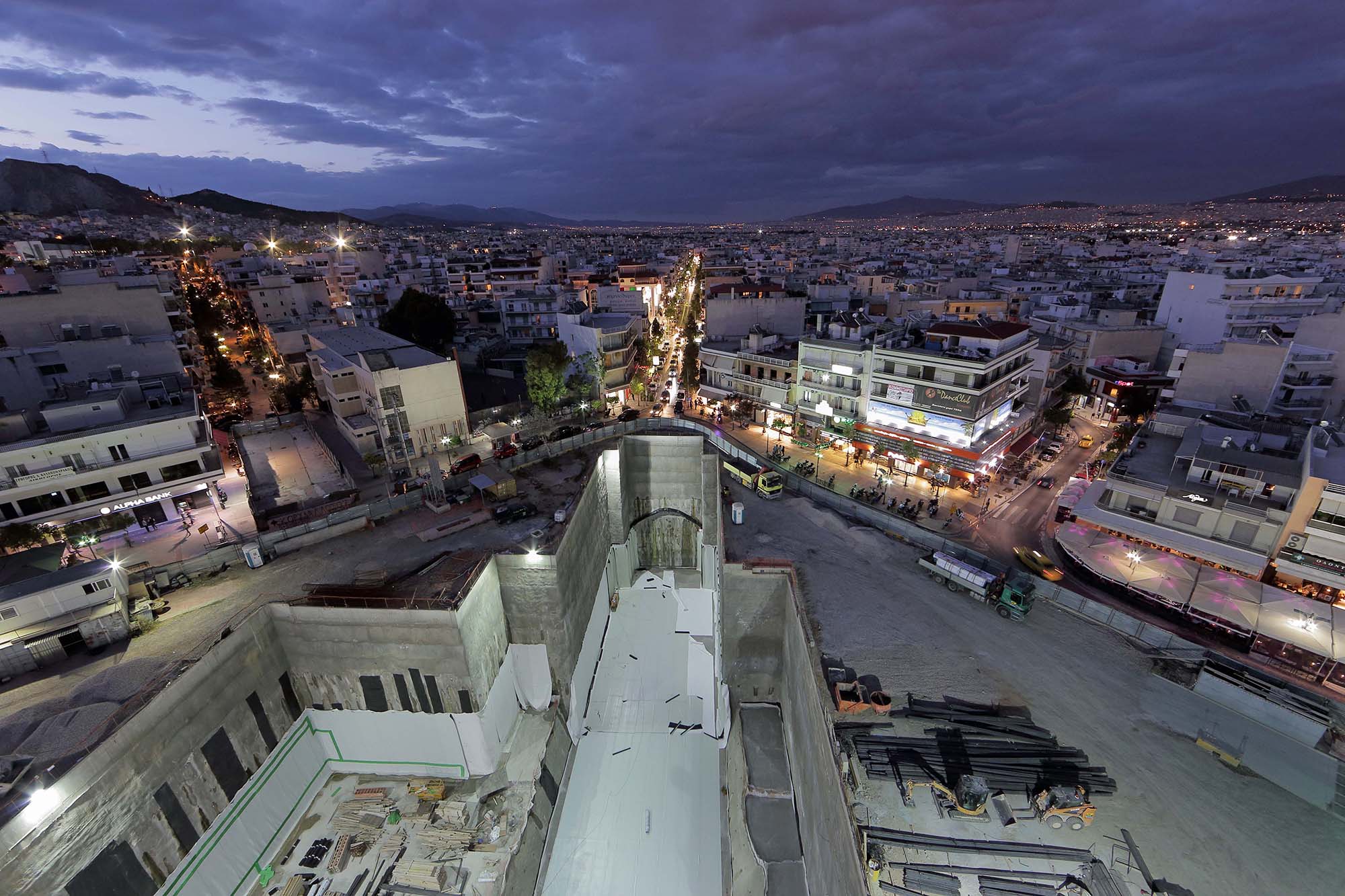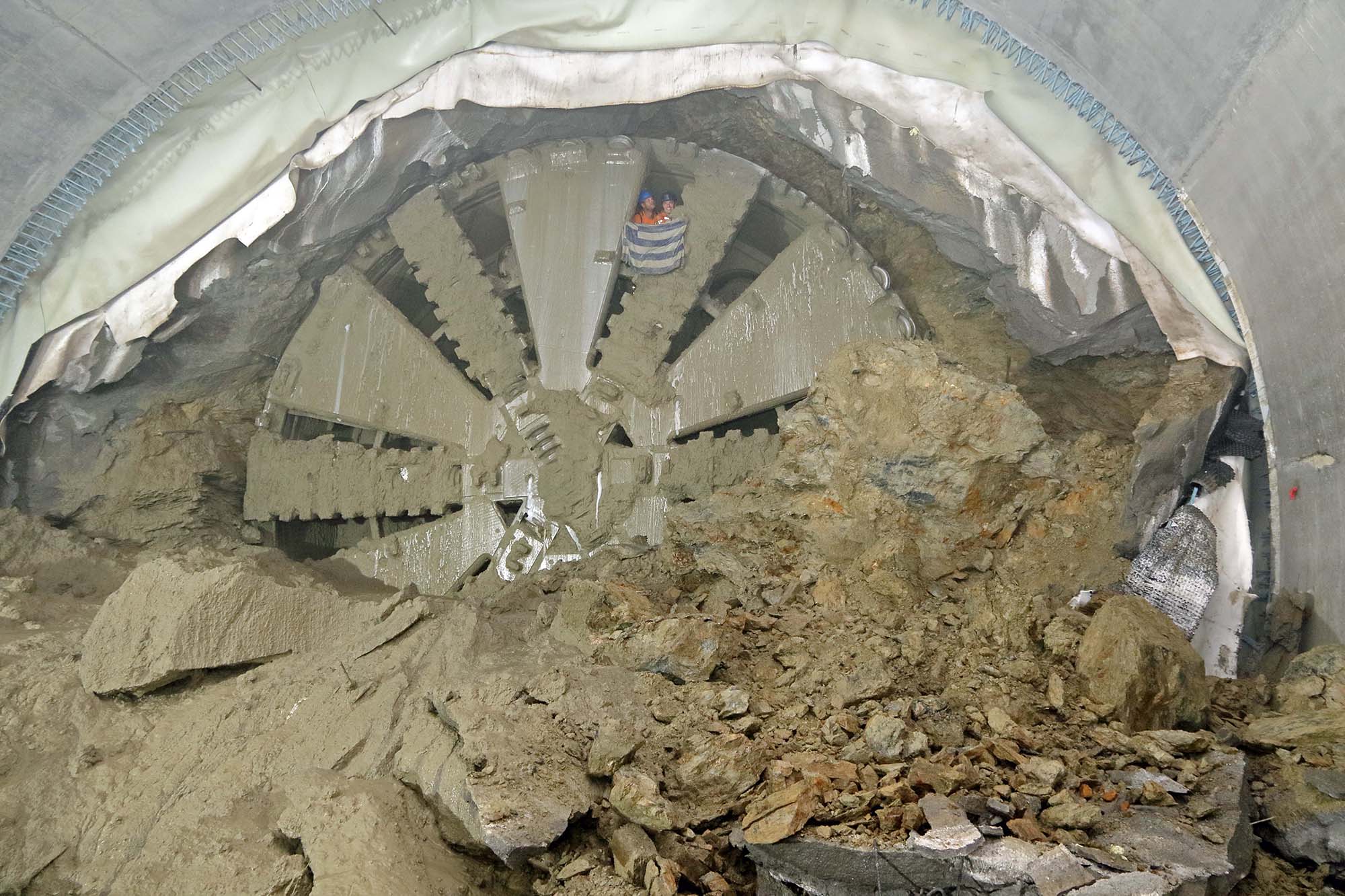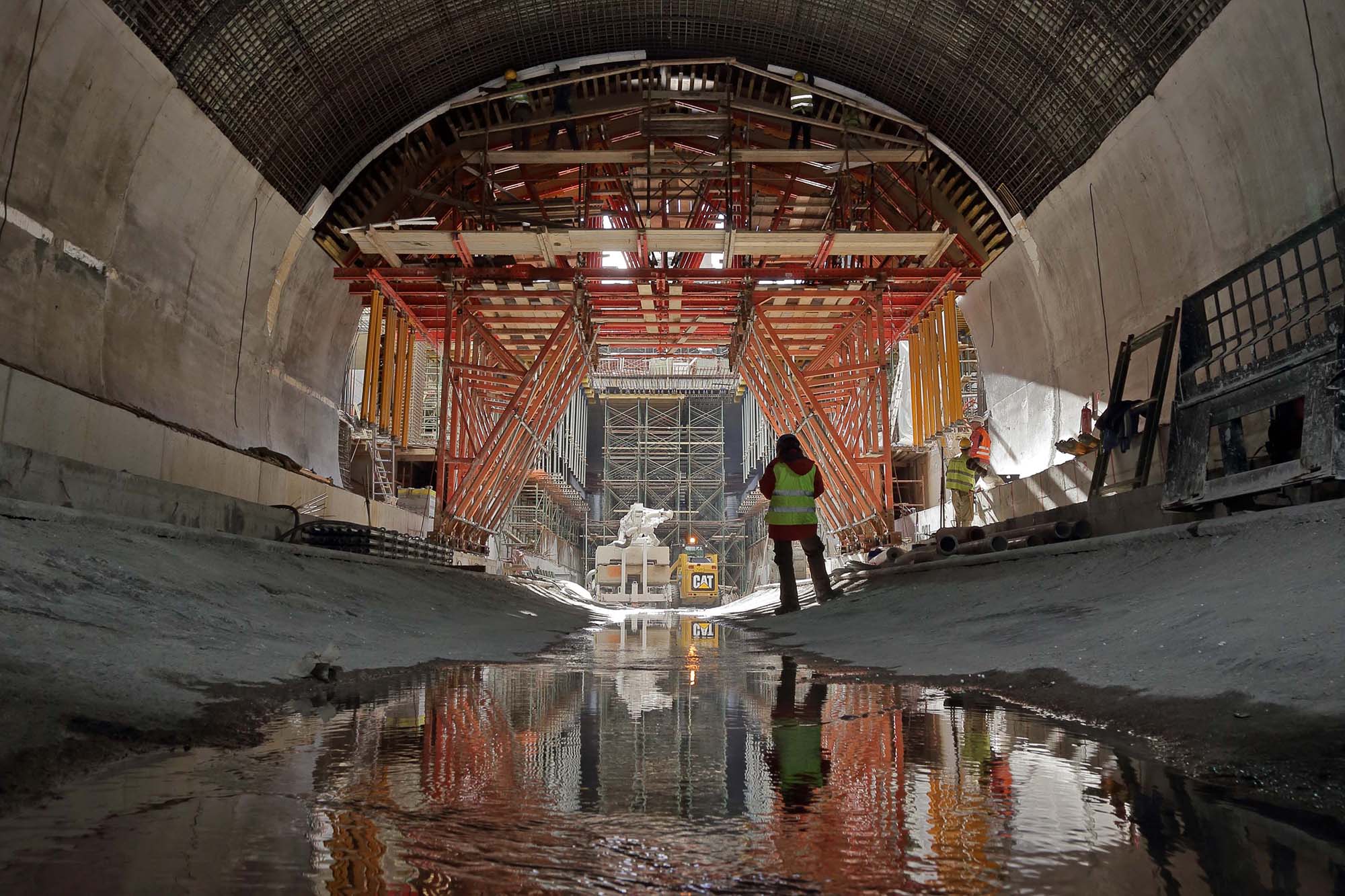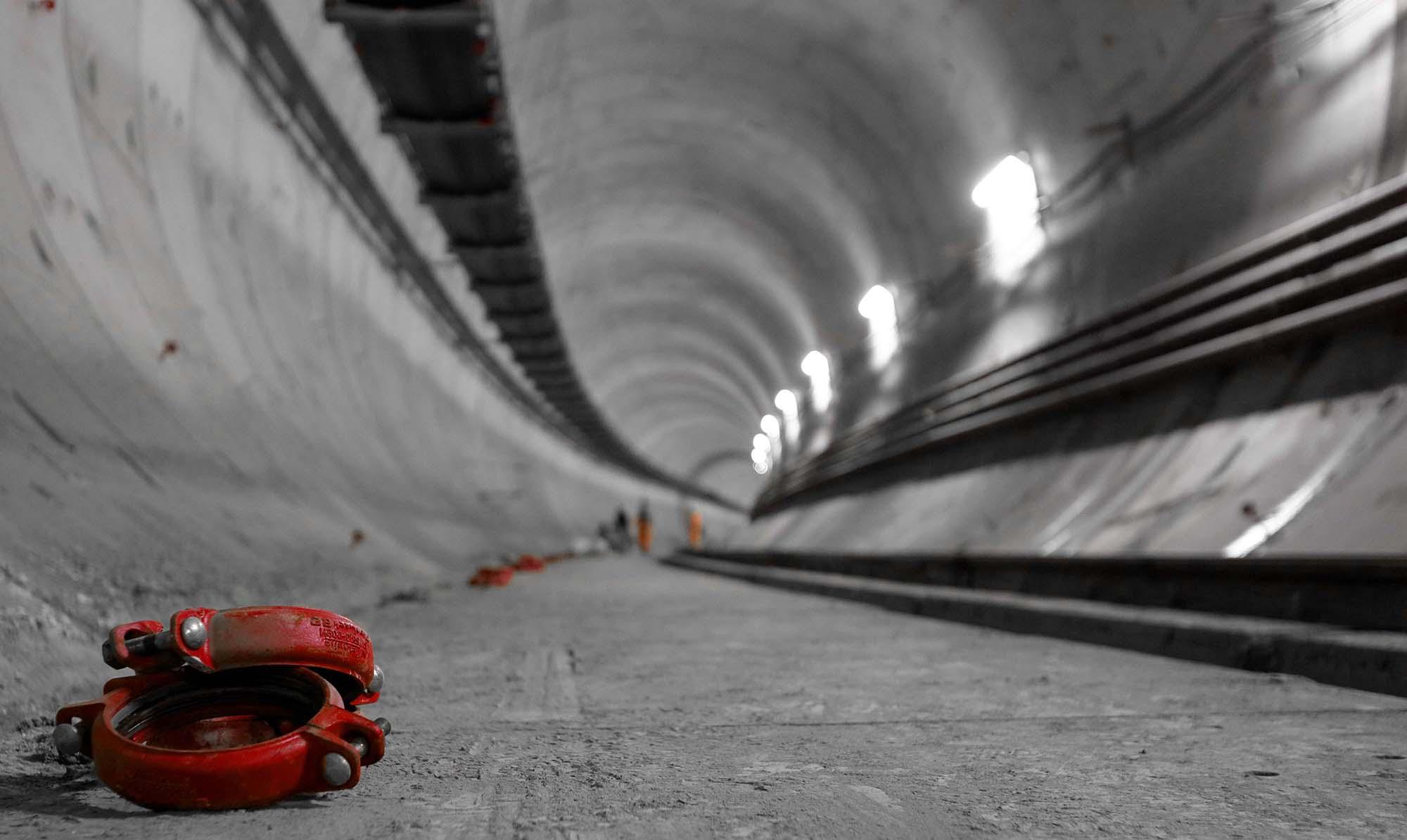Extension of line 3 - Section "Haidari - Pireus" of Athens Metro
Thanks to Hippodamus, again.
A 6.5 km underground tunnel and six new stations to connect the western periphery of Athens with the port at Piraeus.
132,000 passengers per day will be able to travel from Greece’s main port to Venizelos International Airport, saving 60 minutes along the way.
Greece
2012 | 2022
Thanks to Hippodamus, again.
A 6.5 km underground tunnel and six new stations to connect the western periphery of Athens with the port at Piraeus.
135,000 passengers per day will be able to travel from Greece’s main port to Venizelos International Airport, saving 60 minutes along the way.
“Hippodamus” began his journey in Athens. And precisely from the launch area in the Haidari quarter. The construction site was so small that the machine was lowered from above and assembled 35 meters below the ground. The “mechanical mole” (technical name TBM, for Tunnel Boring Machine), the main actor in this project, was named in honor of Hippodamus of Miletus, the Greek urban planner from the 5th c. BC entrusted with the construction of Piraeus after the Persian Wars.
From the day it left, Hippodamus spent almost 4 years boring through the ground below one of the oldest, most densely population and heterogeneously urbanized cities in the world. Our TBM travelled beneath operating railways, sewers, conduits, making this job particularly complex. However, most importantly, it encountered the millenary history of one of the cradles of Western civilization. A still imprecise number of archaeological remains were unearthed: vases, amphorae, plates, small statuary, and other precious items, minutely catalogued and archived by a group of expert archaeologists and specialists.
There was no shortage of challenges. For example, in the tunnel after Piraeus Station, in a section measuring 100 meters in length, 15 meters below sea level, where excavations ran along the port docks and where the foundations of a 20-story building were less than 30 meters away. The delicacy of operations here required a very rigid and challenging procedure, continuously monitored and detailed.
A Few Numbers
The project involved the boring of a 6.5-kilometre dual-track tunnel and the construction of six new stations: Agia Varvara, Korydallos, Nikaia, Maniatika, Piraeus, and Dimotiko Theatro. The first three were inaugurated on the 7th of July 2020 by the Greek Prime Minister Kyriakos Mitsotakis and the Minister of Infrastructure and Transport Kostas Karamanlis. The tunnel was clad by more than 30,000 segments. The tunnel lining rings, in prefabricated concrete, are divided into semicircular parts - precisely the segments. Their quantity varies according to the diameter of the tunnel and the thickness of the ring. In this specific case, each ring is made up of 7 segments. The entire project involved roughly 500 workers and technicians.
The tunnels were bored by 9.48-meter diameter Earth Pressure Balance (EPB) TBMs: perfect for tunneling in urban environments because they avoid any settlement of the earth above. “Hippodamus” completed his work on the 27th of January 2018, with a final breakthrough (the completion of the tunnel) 4 years after excavations began. The project will reduce private vehicles in circulation by approximately 23,000 per day, with a daily reduction of in CO2 of 120 tons.
Boring the ground under the city of Athens has been a continuous excitement and gratification for all the people involved.
A significantly wide range of geomechanical features, an intensly urbanised area, archeological or more recent pre-existences and working below the water table in very close proximity to the harbour; dealing succesfully with all those challenges, the tunnel extension of the Metro Line 3 is being completed with state of the art quality and absolute satisfaction of the stakeholders.
We are all glad and proud.
Eng. Michele Petris, Tunnel Manager





